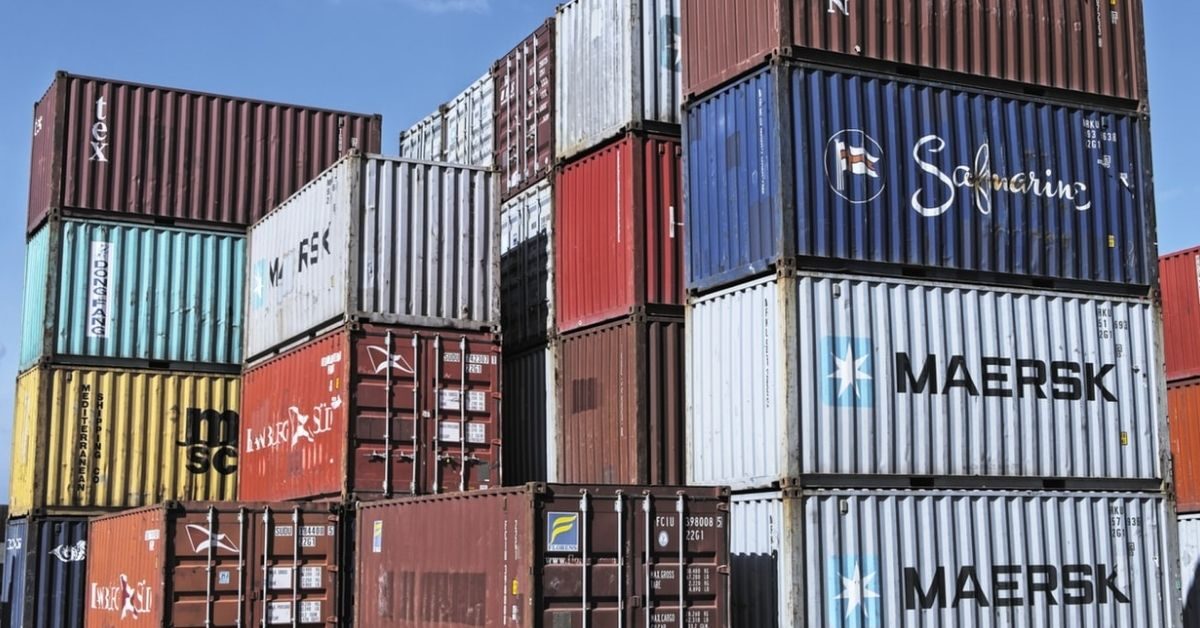Source: Container news
On the westbound India-Europe trade, average short-term contract rates for 20-foot container bookings from West India [Jawaharlal Nehru Port (JNPT)/Nhava Sheva or Mundra Port] to Felixstowe/London Gateway (UK) have been steady at US$3,600 per 20-foot container, while 40-foot container loads have seen rates increase to US$3,900 per FEU, from US$3,650 at the end of January.
For Indian loads to Rotterdam (the Netherlands), February rates have stood at US$3,600 per 20-foot container and US$3,900 per 40-foot container, up from US$3,700 and US$3,750 respectively a month ago.
For West India-Genoa (the West Mediterranean) bookings, contract rates have cooled to US$4,050/TEU, from US$4,200, and US$4,100/FEU, from US$5,000, the CN analysis shows.
Similarly, eastbound cargo (imports into India) rates for these port pairings have softened from end-January averages to US$2,550/TEU and US$2,800/FEU, from US$3,050 and US$3,600, respectively, for bookings from Felixstowe/London Gateway to West India, and also down to the same levels, from US$3,150/TEU and US$3,750/FEU, for shipments from Rotterdam to West India.
For trades from the West Mediterranean (Genoa) to West India, January rates stand at US$1,050/TEU, down from US$1,250, and US$1,700/FEU, down from US$1,850/FEU.
Short-term contract prices on the India-US trades have also seen downward corrections from the Red Sea crisis-induced highs. Average rates in February for shipments from West India (Nhava Sheva/Mundra) to the US East Coast (New York) have stood at US$4,000/TEU, down from US$4,500, but FEU rates have increased to US$5,500/FEU, from US$4,650/FEU a month ago. For Indian container loads moving to the US West Coast (Los Angeles), rates have plunged to US$2,500/TEU and US$3,500/FEU, from US$3,750 and US$4,100, respectively, reported at the end of last month.
For the West India-US Gulf Coast (Houston) trades, rates have slid to US$4,500/TEU and US$5,000/FEU, from US$4,750 and US$5,500, respectively, according to the CN analysis.
Short-term contract rates on the US-India trades (return leg) have mostly held firm month-on-month, with USEC-West India pricing continued to hover at US$600/TEU and US$800/FEU. For US West Coast-West India bookings, rates have been down to US$950/TEU and US$1,250/FEU, from US$1,100 and US$1,400.
Average rates from the US Gulf Coast to West India have seen no noticeable changes versus January – at US$1,000/TEU and US$1,300/FEU.
Carrier contract rates on intra-Asia trades out of India have in some port pairings recovered from the previous lows, the CN analysis found.
For West India-Yantian (South China), the analysis has put average rates at US$125/TEU and US$110/FEU, compared with US$75 and US$150, respectively, while for West India-Tianjin (North China), carriers are now quoting US$100/TEU and US$20/FEU, compared with US$75 and US$150, respectively, last month.
However, for West India-Shanghai (Central China) trades, December rates have continued to weaken, at US$90/TEU and US$20/FEU, from US$150 and US$210, respectively, a month ago.
Also, for West India loads to Singapore, carriers continue to accept bookings at as low as US$10/TEU and US$10/FEU. However, carriers have been able to push rates higher on the West India-Jebel Ali (Dubai) trade -– with February averages reported at US$200/TEU and US$350/FEU, up from US$90/TEU and US$225/FEU in January.
Meanwhile, although Indian merchandise exports saw a modest rise by value in January year-over-year, industry stakeholders remain increasingly concerned about the impact of the Red Sea crisis on trade targets for fiscal year 2023-24, which ends on 31 March.
“Recent tensions in West Asia especially the threat to consignments routing through the Red Sea have further added to woes of the exporting community, as the freight rates have gone up unimaginably high, with further burden of various surcharge,” said Israr Ahmed, president of the Federation of Indian Export Organisations (FIEO).
Ahmed also noted: “The crisis is pushing Indian exporters to hold back around 25% of the outbound shipments transiting through the Red Sea, which added to the sense of scepticism and nervousness among the businesses and markets across the world.”
He went on to say: “Much will depend on new agreements to be signed with buyers during the new fiscal as the exporters have been absorbing the burden of increased freight cost as per the old agreement.”
According to FIEO, “The need of the hour is to address the Red Sea crisis challenges by ensuring availability of marine insurance, regular supply of containers, and rationale increase in freight charges.”
The association added: The sector also needs easy and low cost of credit, marketing support, besides conclusion of some of the key free trade agreements with the UK, Oman and EU soon.” However, FIEO expressed optimism about the overall export outlook, noting that annual exports would surpass last year’s figures.








